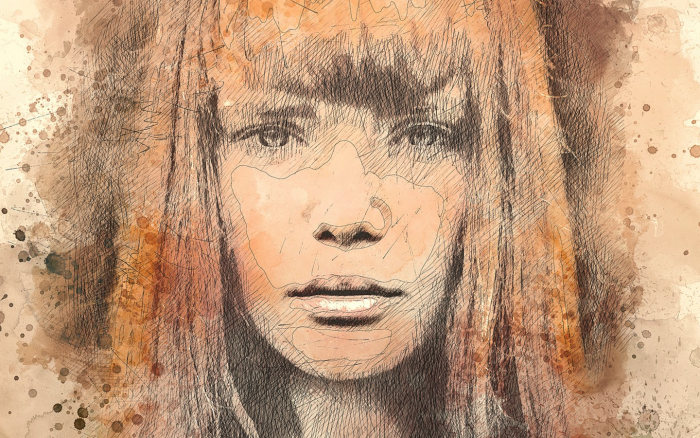
I couldn’t sort out what was wrong with me.
My body sensations dulled until I could perceive nothing but a fire in my spine. As though I was cleaved in two, my torso felt like a separate entity from my head.
I had fallen in love, only to be slammed with the preoccupied urgency of anxiety. Reinforced by the burning in my body, my resources became almost entirely dedicated to the intensity of solving the unsolvable: how to reclaim the safety that I once felt in the relationship.
I wanted nothing more than connection.
But all I wanted to do was run.
We have two core needs: attachment and authenticity. The drive for authenticity is a drive to know ourselves and who we are. The drive for attachment connects us to others, where we attune our nervous systems and bear witness to one another’s experiences.
We spend a lifetime searching for the truth of ourselves within these two connections.
Yet, what many of us find when we explore the depths of either attachment or authenticity is an unfulfilled yearning. Knowing that something is missing, we search for truth in material belongings and outside accomplishments.
We painfully discover that our attachment and authenticity are not something our essence can touch with our hands, buy with our money, or achieve with our careers—they are something we need to feel.
Yet when we try to connect to our sensations, we might find ourselves experiencing a dark, black absence—a hole. This cave in our being is a disconnection, otherwise known as trauma.
Trauma can feel like a mystery if we believe we had a happy childhood or cannot recount an obvious tragedy or hardship.
Absence of a hallmark event of trauma—abuse, neglect, addiction, violence—is not necessarily an absence of trauma. If we have unmetabolized childhood emotional experiences that impacted our brain development, we may experience the hallmarks of trauma in our adult lives.
Trauma isn’t about the event or the severity of the event. It’s about the residue and imprint it leaves on our bodies and our brains.
If we had no one to hold us in our pain, attune to our needs and help us, we might have unprocessed emotional experiences that continue to shape our responses, capacities, and connections as adults.
I had an ordinary childhood, doing all the things one “should”: summers in the swimming pool, winters building snow forts, and cross country skiing in the yard.
My parents loved my siblings and me, doing their best to not only provide the basics but also providing the standard middle-class top-ups: music lessons and family vacations.
Yet below the surface of our happy family, there was a processing error in my developing brain.
If emotions were a faith, my parents were agnostic.
I recall catching my finger in the articulation of the skating rink board and hearing my dad tell me en route to the first aid station, “Shake it off; it will only sting for a second.”
The throbbing suggested otherwise.
A seven-year-old does not have the skills to refute the emotion that’s arising without conversation, a witness, or an empathetic abiding presence.
With nobody to talk to about the sensations in my body or the overwhelm of emotions in my brain, I did what I had to do: disconnected my body from my brain. I retained the attachment to my parents—at the cost of my own authenticity.
Like many of my contemporaries, I was being raised with a trauma we didn’t even know existed at the time.
It’s just how things were done.
Trauma is a disconnection that makes us suffer. The benign or mundane—the times we were told something as small as “quit your crying”—might have caused us to disconnect from ourselves.
If we find ourselves struggling in adulthood, we may want to do a simple self-assessment, evaluating whether we have these five hallmark behaviors of trauma:
1. Disconnection from our gut feelings.
Trauma severs the cord to our deepest and most innermost feelings, and we present problems to our brain rather than gathering data from our body.
2. We find it difficult to be in the present moment.
We’ve learned that operating in the here and now is unbearable, so we disconnect and find ourselves living in the anxiety of the future or the preoccupation and regret of the past. We check out by keeping ourselves too busy and preoccupied to experience the present.
3. We find it hard to be self-compassionate or to extend compassion to others.
We have a hard time recognizing that most of our human experiences are common humanity, and we feel alone. Rather than extending compassion to others, we bury them in criticism and expectations, severing our connections.
4. We lose our curiosity and openness.
We become inflexible and rigid, like embodied scar tissue rather than flesh. We are set in our ways and operate from triggers and perceptions rather than exhibiting curiosity and being open to the answers.
5. Our nervous system is running the show.
We chase the fleeting squirrels of emotions rather than feeling, integrating, or processing them. We have a hard time connecting our brain, gut, and heart, so we follow the zigging and zagging of emotions in real-time, struggling with emotional co-regulation or self-regulation.
When we discover that we are carrying one or more of these hallmarks of trauma, our first instinct is to look into “what happened.”
While helpful, that is not enough. We must also address the effects of what happened; we must address the disconnection.
Our childhoods have come and gone, so this means as adults, we get to do what we were not allowed during our development: connect to the truth of our emotions in the present moment, find a connection in attunement to others, find safety, and allow others to bear witness to our truths. We can seal the hole inside us and find authenticity and attachment again.
We must engage in these lifetime daily practices to heal the five hallmarks of trauma:
1. Reconnecting to our gut feelings.
2. Practicing being in the present moment.
3. Exercising compassion and self-compassion.
4. Exploring ourselves and others with curiosity and openness.
5. Allowing our brain, gut, and heart to make joint decisions.
6. Focusing—not on what happened, but instead on how to metabolize our experiences, which means feeling the sensations in our body and speaking them aloud to an empathetic witness.
We must learn to do the most difficult task any of us are asked to do in this lifetime: feel our feelings in the present moment.
And we can discover that there is, in fact, nothing wrong with us.
AUTHOR: JANIS ISAMAN
IMAGE: LAYERS/PIXABAY

Read 30 comments and reply